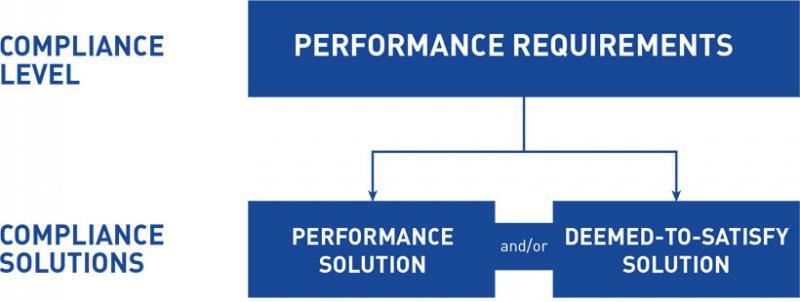It’s valuable for designers to understand and investigate the alternative pathways available to meet and/or exceed the Performance Requirements of the NCC energy efficiency provisions.
Choosing a Compliance Pathway
There are essentially three options for a building solution –
- Complying with the Deemed-to-Satisfy (DTS) Provisions;
- Formulating a Performance Solution, which complies with the Performance Requirements or is shown to be at least equivalent to the DTS Provisions; or
- A combination of both.


DTS Solutions
The DTS Provisions provide prescriptive measures (like a recipe book), based on static calculations, allowing for an easy-to-use, ‘no frills’, simplified compliance pathway. Specific design solutions, if used through this pathway, are deemed to meet the Performance Requirements, hence “deemed-to-satisfy”.
Performance Solutions
Another option is a Performance Solution, typically using Verification Method JV3, which allows for a building to be analysed using, in most cases, a building energy model. A JV3 Performance Solution is partly met when it is determined that the annual energy use of the proposed building is not more than the annual energy use of a reference building. (Note that a Performance Solution doesn’t have to be done at the whole-of-building level, and could be used for an individual component like insulation or glazing).
This approach has the ability to model intricacies of design through dynamic simulation, providing opportunities to ask specific questions like:
- Is more insulation cost effective?
- Will this shading actually work?
- What is the quantifiable benefit of an onsite renewable energy system on the project?
Having the ability to predict and analyse the future building behaviour is far more efficient and economical than fixing problems later. It provides flexibility in design and allows the opportunity to concentrate on hot spots within the building, providing high-benefit, low-cost solutions.
These up-front architectural decisions about a building’s form, orientation, and even architectural style can have the greatest long-term impact on Heating, Ventilation and Air Conditioning (HVAC) or lighting efficiency.
Is more insulation cost effective?
The improvement of insulation on the thermal performance of that space using a modelled solution can highlight the ‘sweet spot’ as we like to call it, that provides the highest benefit for the least cost. The chart below shows heat loss through the building as it decreases steeply and slowly plateau outs. The ability to calculate the cost/benefit of insulation will provide a higher performing building at optimal cost.
Will this shading actually work?
Shading allowed under the DTS glazing requirements is limited to horizontal shading. It must project the same distance as it extends horizontally on either side of a window, or be a shading device capable of restricting at least 80% of summer sun. The clever design of shading may not be fully appreciated when using a DTS Solution.
Using a Performance Solution (JV3 energy modelling) provides the ability to more accurately predict the impact of shading structures, when compared against a reference project with DTS shading allowances.
The chart below shows an example, comparing the reference and proposed solar gain for a medium size office in climate zone 5 (Perth).
What is the quantifiable impact of an onsite renewable energy system on the project?
Using a Performance Solution based on Verification Method JV3 allows for the annual greenhouse gas emissions of the proposed building to be offset by renewable energy generated and used on site. The name of the game is to use the energy generated within the building - suitably sizing the renewable system for optimal use to provide the highest benefit for the least cost.
Energy efficiency Performance Solutions
Three key concepts for tackling energy efficiency provisions for commercial buildings when utilising Performance Solutions include:
More information
Have a question about Performance Solutions? The ABCB’s Subject Matter Expert (SME) Network may be able to help you.